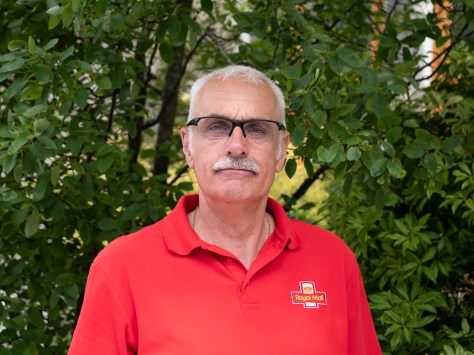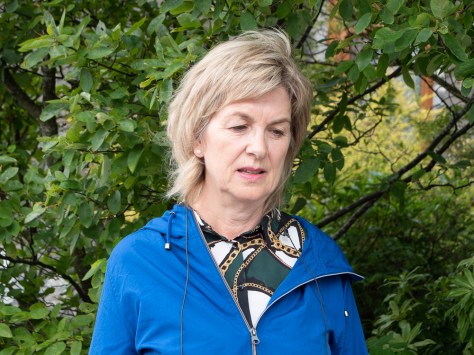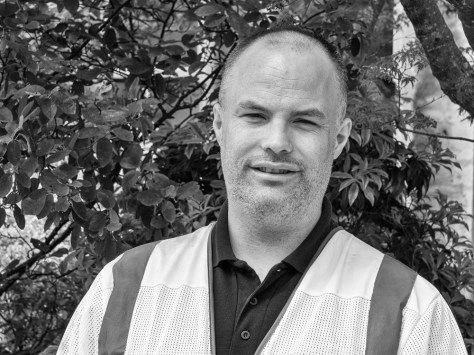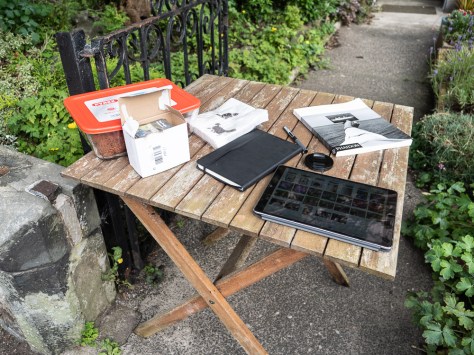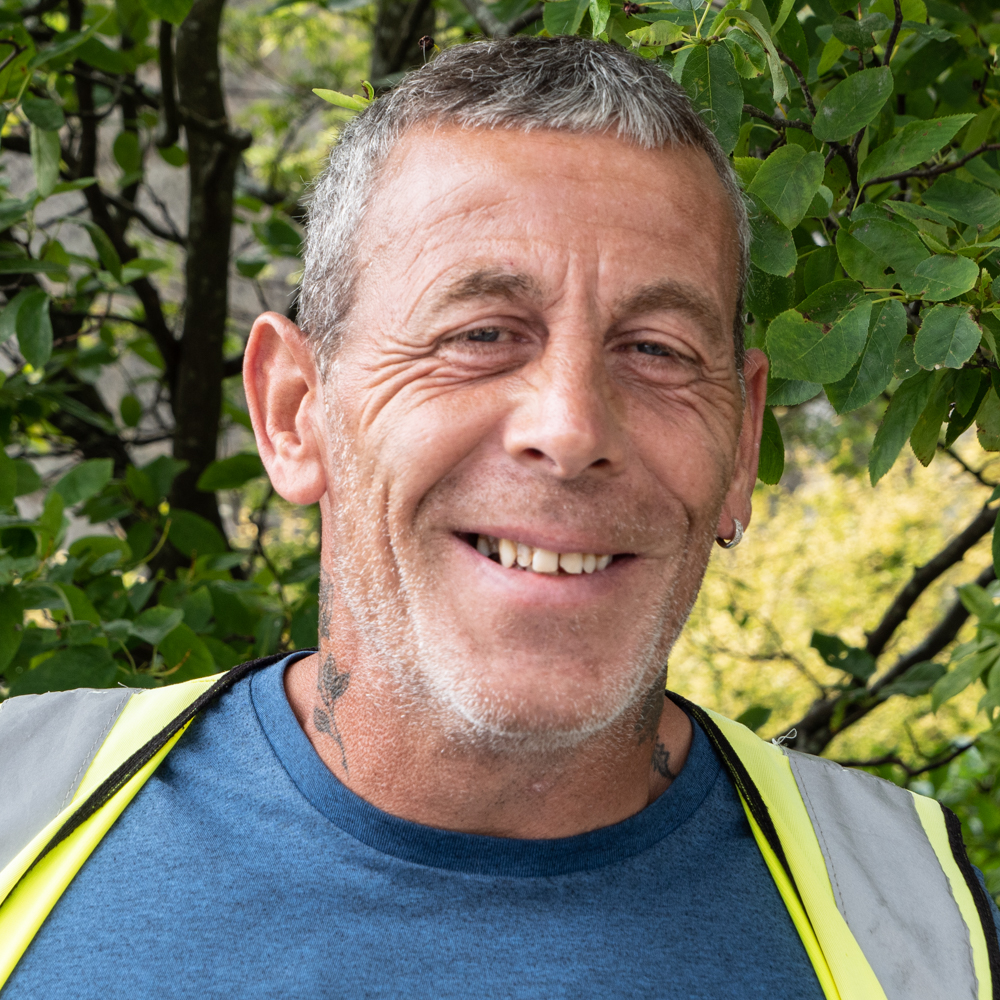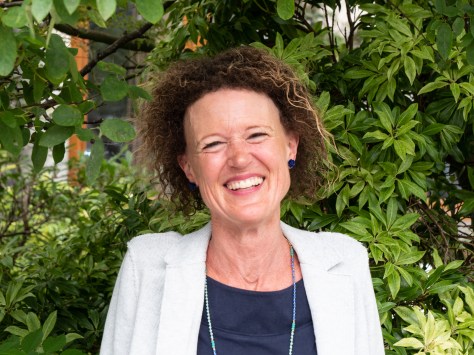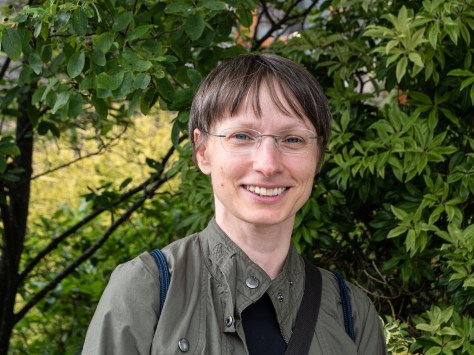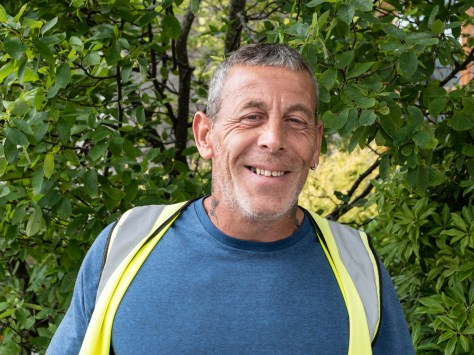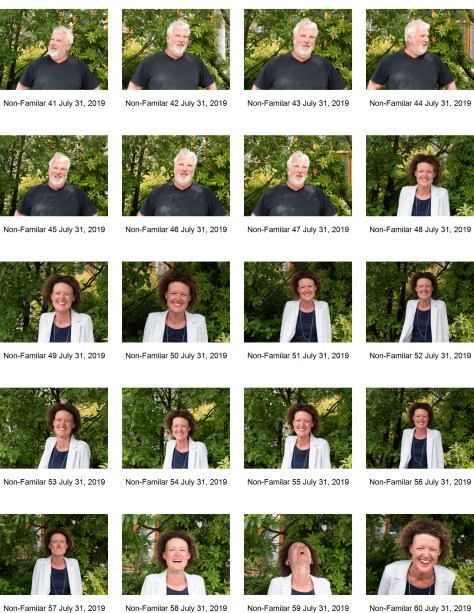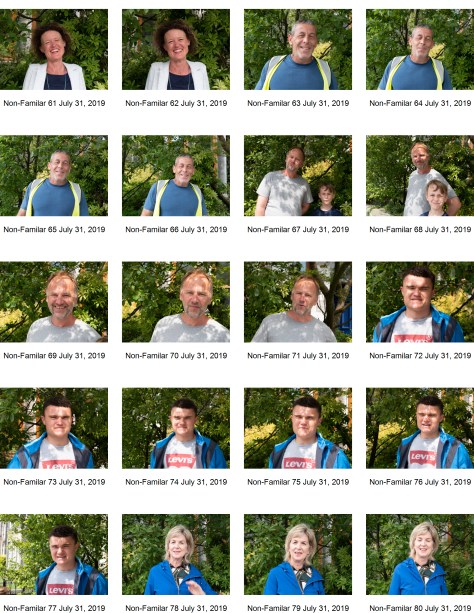I had an interesting Skype tutorial with my tutor which was, on the whole, positive. He reminded me that, as the photographer, I should be in control, rather than my subjects being in control. A piece of advice I have tried to take on board, although, so far, with limited success. It is difficult to tell your daughter how to pose without being told that she will do it how she wants!
Assignment 1:
He suggested trying different edits of the images which I have done. I definitely prefer one of the edits he suggested – the deadpan look. This made me really think about the need to consider exactly what you are attempting to show rather than taking the simplest option. Assignment 1 – Rethink
Research:
He also gave me several fascinating photographers to research. Bettina von Zwehl, Joel Sternfeld and Paul Graham.
Chandler says ‘ our received understanding is that a portrait should be a kind of penetrating analysis, and , furthermore, that the most effective and enduring portraits are those that are the result of some connection, or even chemistry, having existed between the artist and the sitter’ (Chandler and Von Zwehl, 2014).
Von Zwehl, Sternfeld and Graham all use portraiture as a way of describing their world. Of showing what is important. However, they are very different. Von Zwehl uses minimalistic images, sometimes just a silhouette with little or no visible background. The images are often black and white, or, if colour, muted. Her recent work is small and relies on the series to tell the story, which is more about the feeling and emotion rather than the individual person. Chandler says ‘the profile is a form of distilled representation – the rendering of some emblematic essence of the person depicted …. both accurate and unsentimental’ (Chandler and Von Zwehl, 2014).
Sternfeld’s images in Stranger Passing are large scale. They tell a story about that person in that time and at that place (although it is an imagined story and someone else’s interpretation might be different). In this case Sternfeld took images of strangers who he met while travelling – they remain penetrating studies of the person – so this raises the question of how rapidly you can make a connection with someone to be able to take a valid portrait. This may well be a skill that can be acquired, but I suspect to acquire it one needs an interest in people that goes beyond the superficial who, what and where. Why – is probably the most important question of all.
Graham’s recent book Mother shows pictures of his own mother towards the end of her life. Like Von Zwehl in Made Up Love Song he is concentrating on one person (his mother) using images taken in the same place (her retirement home). However, unlike Von Zwehl he starts the series with a close relationship (child to parent) and the images are reflecting on how this relationship has altered with time. It is a very personal piece of work, haunting in nature as one is aware that these are likely to be some of the last images he will take of her.
In Sontag’s work Regarding the Pain of Others (Sontag, 2003) she makes several statements that are relevant in the context of portraiture –‘a portrait that declines to name its subject becomes complicit, if inadvertently, in the cult of celebrity that has fuelled an insatiable appetite for the opposite sort of photograph: to grant only the famous their names demotes the rest to representative instances of their occupations, their ethnicities, their plights’ and ‘Photographs objectify: they turn an event or a person into something that can be possessed. And photographs are a species of alchemy, for all that they are prized as a transparent account of reality.’ She also talks about memory and mourning and how photographs help with memory, how they can ‘haunt us’. She says ‘Memory is, achingly, the only relation we can have with the dead. So the belief that remembering is an ethical act is deep in our natures as humans’ – Sontag is discussing this in the context of images of war, terrorism and similar acts of violence but it also applies to memory of those near to us, friends, relatives, those we know.
Reference list
Chandler, D. and von Zwehl, B. (2014). Made up love song. London: V & A Publishing.
Sontag, S. (2003). Regarding the pain of others. New York: Picador.




